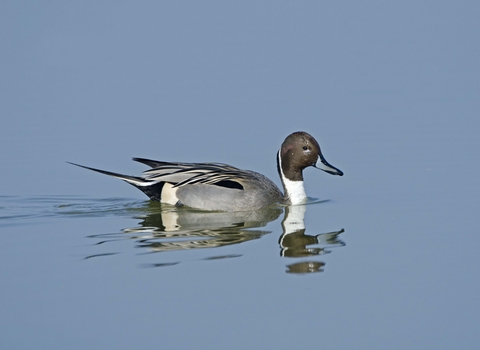
Pintail © David Tipling/2020VISION
Pintail
When spotting the pintail in winter, look out for the fabulous, long tail feathers that characterise it. This dabbling duck feeds at the water's surface, rather than diving for food.
Enw gwyddonol
Anas acutaPryd i'w gweld
January to DecemberTop facts
Categori
Stats
Length: 55-65cmWingspan: 88cm
Weight: 700-900g
Average lifespan: 3 years
Classified in the UK as Amber under the Birds of Conservation Concern 5: the Red List for Birds (2021). Protected in the UK under the Wildlife and Countryside Act, 1981.
Habitats
Ynghylch
The pintail is an uncommon dabbling duck, which rarely breeds in the UK and is most likely to be seen during the winter when it can be found with other ducks. Larger numbers gather on selected sheltered estuaries, such as the Wash and the Dee Estuary. Like all dabbling ducks, pintails feed at the surface rather than diving for their food. They eat plant food when dabbling, but will supplement their diet with insects and molluscs in the breeding season.What to look for
The pintail is easily distinguished by its long, pointed tail feathers. Males have a chestnut-coloured head, white neck and grey body, while females are mottled brown with smaller, pointed tails. Pintails also have a long, graceful neck.Where to find
Mainly a winter visitor to coasts and estuaries. Small numbers nest here, particularly in northern Scotland.Roeddech chi yn gwybod?
The oldest pintail was recorded as living to 27 years of age! Normally, these ducks live for an average of about three years, breeding after a year. Pintails will lay up to nine eggs in a concealed nest on the ground, some distance from the water. At best, only a third of their clutch will live long enough to breed themselves - the chicks are vulnerable to predators such as foxes, crows, magpies and birds of prey.Gwyliwch
Pintail (https://vimeo.com/642750907)
Tom Hibbert
